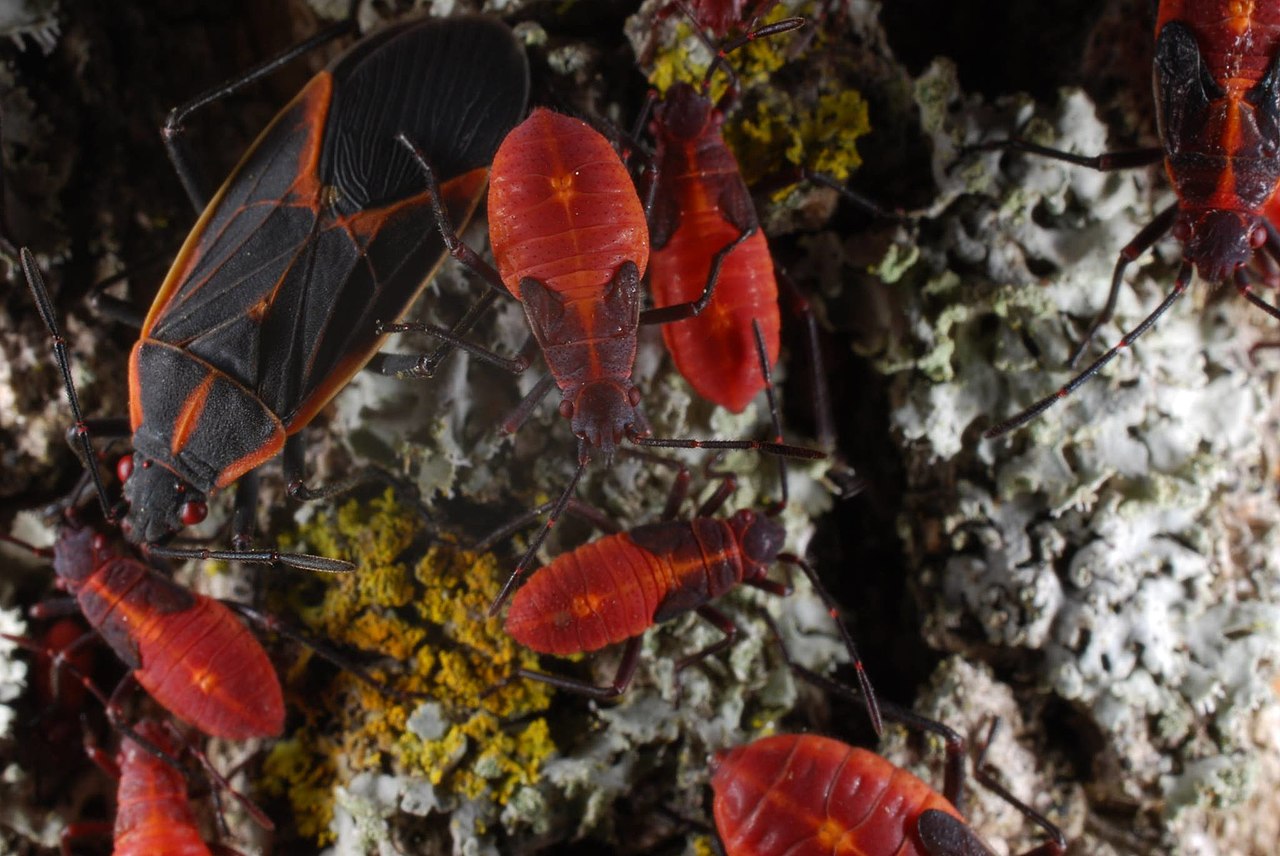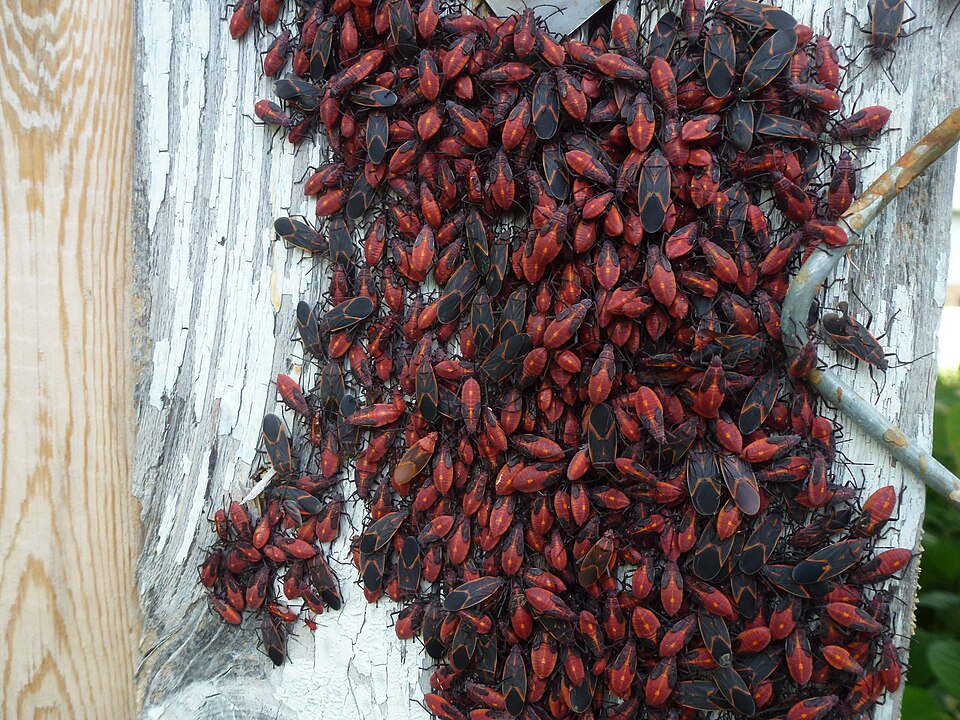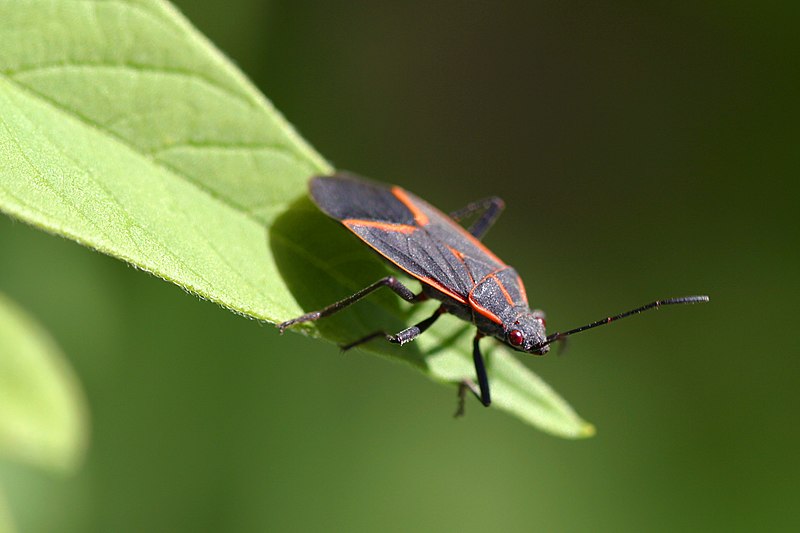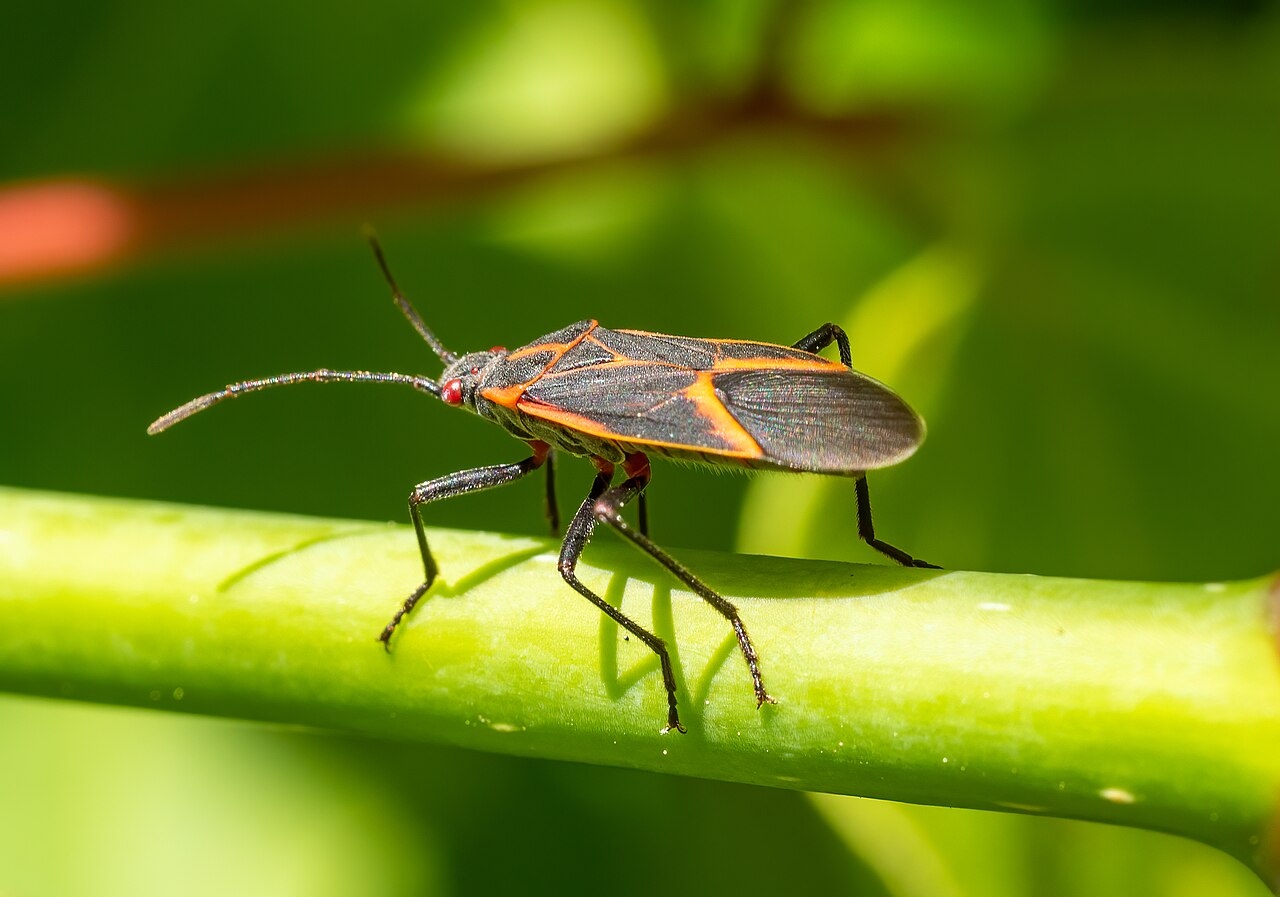
Window Treatment & Styles
How to Get Rid of Boxelder Bugs for Good: 10 Methods that Work!
If you've ever seen a cluster of black-and-red bugs (quite beautiful from afar, we must admit!) swarming your walls, windows, or sidewalks, you've likely met the famous boxelder bugs. While they're mostly harmless, their sheer numbers, bad smell, and tendency to sneak indoors can make them a real nuisance. Luckily, it is definitely possible to get rid of them or at least reduce their numbers.
Therefore, if you want to learn how to get rid of boxelder bugs, read on! We'll start with some basic information about these bugs to help you understand their behavior and then discuss some effective measures you can take!
Key Takeaways
- How to identify boxelder bugs: they go through three life stages—egg, nymph, and adult. Adults are black with red markings and flattened wings, while nymphs are smaller and red. Their foul odor and tendency to gather in huge numbers help distinguish them from other bugs.
- When and where you'll see them: they become active in early fall, seeking warmth on sunlit walls and eventually sneaking indoors for winter. Come spring, they reappear outdoors to feed and lay eggs but typically don’t cause serious damage.
- How to get rid of them: prevent boxelder bugs indoors by sealing cracks, repairing bug screens, and upgrading window and door seals. Use a vacuum cleaner to remove them or spray them with water and soap, which will kill them. Outdoors, you can remove seeds, spray nymphs with water, use diatomaceous earth, and prune or remove female boxelder trees.
How to Identify Boxelder Bugs?
Boxelder bugs, a species of true bugs with piercing and sucking mouthparts, are often found on maple or ash trees. Here's how you can identify them based on their life cycle:
- Eggs: boxelder bug eggs are small, elongated, and red; they are laid on tree bark and leaves in groups of 10.
- Nymphs: boxelder bug nymphs look like adult boxelder bugs but are smaller and have no wings; newly hatched nymphs are fully red and as they mature, they develop darker markings, and their wings start growing (see photo below).
- Adults: adult boxelder bugs have a flattened, elongated body and measure approximately 13 mm (0.51 in) long (without antennae); the upper body is slate gray to black; there are reddish-orange lines on their bodies; the abdomen is red; the legs and the antennae are black; their wings are crossed in an X pattern and appear flattened over their back.

Boxelder bugs can also be distinguished because of their pungent smell (not to be mistaken for stink bugs, which is a term used to refer to a different bug species), which is released when faced with predators. Because of this (and thanks to their bright red coloration), boxelder bugs congregate in groups of thousands.
When Are Boxelder Bugs Active?
In Canada, boxelder bugs become a problem in early fall. That's when they start looking for warm places like wooden fences, tree trunks, and sidewalks. That's why aggregations of sometimes thousands of boxelder bugs are often seen on the sunlit sides of houses with southern or western exposure.
As winter approaches, boxelder bugs start to get closer to nearby buildings, seeking shelter. If they manage to get into the house during cooler weather, boxelder bugs live behind siding and inside of walls, often on warm surfaces. Adults become active during warmer temperatures and return to their hiding places when temperatures drop. During their walks around the house, boxelder bugs may leave feces behind, which can stain fabrics.
In early spring, boxelder bugs emerge again and start looking for suitable places on their host trees to lay eggs. During the boxelder bug season, meaning spring and early summer boxelder bugs are only an outdoor nuisance.
How to Get Rid of Boxelder Bugs Outside Your House and Inside

Now that you know some basic information about boxelder bug behavior and you know where to look for them (just in case you haven't spotted them yet in or around your house), let's find out how to get rid of boxelder bugs indoors and outdoors!
1. Soapy Water Spray
Soap is a boxelder bug's worst enemy. Why? Because it breaks down its outer shell, which causes them to dehydrate and die.
So, add a tablespoon of dish soap to a spray bottle of water, shake the bottle, and then spray the mix directly on the bugs.
You can also add essential oils like neem or eucalyptus for an extra measure, but it's not completely necessary. Soapy water is your best option!
2. Use a Shop Vacuum
If you have lots of boxelder bugs inside the house, use a shop vacuum to remove them. Attention! Don't squeeze them because they'll leave stains and an unpleasant smell. That's why a shop vacuum cleaner is the best. After vacuuming the bugs, seal the vacuum bag and dispose of the contents safely.
However, keep in mind that vacuuming the existing boxelder bugs won't prevent others from entering the house.
3. Remove Boxelder Tree Seeds
This solution works during the spring. Why? Because young boxelder bugs survive primarily thanks to the maple tree seeds lying on the ground from the previous year. So, if you remove them completely, the next generation likely won't survive.
This solution is especially useful for those who don't want to or can't cut down nearby boxelder trees.
4. Use Your Garden Hose Every Day
This is yet another solution that works best in spring when boxelder bugs are still young and drown easily.
So, if you want to prevent them from entering your house in the fall, use your garden hose every day during the spring, aiming it at congregations of bugs.
5. Use Diatomaceous Earth

Diatomaceous earth is a natural insecticide that can kill boxelder bugs by absorbing their outer layer, causing them to dehydrate and die (similarly to soap). It works for other insects as well.
You can spread thin layers of diatomaceous earth at entry points (windowsills, for example), at the base of the trees, and even directly on the bugs.
While diatomaceous earth is generally considered safe for humans and pets, it's extremely important to avoid inhaling it. Therefore, spread it on days without wind and, ideally, wear a face mask to protect your lungs. Additionally, make sure to keep children and pets away while you're spreading the diatomaceous earth so they don't inhale it.
6. Trap the Bugs
Trapping boxelder bugs can be an effective way to capture and dispose of them without causing harm. You can find boxelder bug traps at any hardware store in your area. They're designed to attract the bugs and then trap them. You should place the traps close to the entry points. And don't forget to replace them regularly.
7. Prune Boxelder Trees
Trimming your boxelder trees is a great way to cut down on boxelder bugs. Since they’re attracted to the seed pods, keeping the female boxelder trees well-maintained helps reduce the things that draw them in.
If you’re dealing with a serious infestation, removing boxelder trees altogether is another option.
8. Seal Your House
If you don't want boxelder bugs to enter your house, seal it. Seal all the cracks - everything. Focus on:
- Covering dryer vents under eaves and in attics
- Sealing cracks in walls that are 1/8th inch or larger (but avoid covering weep holes)
- Sealing areas where utility pipes, cables, and other utility wires enter the building
- Installing a rubber seal along the bottom of garage doors
- Sealing gaps and cracks where different materials meet
9. Repair or Replace Windows, Doors, and Bug Screens
Did you know that most boxelder bugs get inside houses through windows, doors, and broken bug screens?
Therefore, focus on repairing or replacing your windows, glass doors, and exterior doors and repair holes in bug screens. Additionally, replace caulking and weather stripping.
If your window and door frames are warped or cracked, it's best to replace them altogether with properly sealed units. These won't only keep bugs out but also maintain your home warm in winter, lowering your energy bills.
In this regard, you can contact Magic. Our windows and doors:
- Feature advanced bug screen technology - perfect for keeping any bugs out! Our screens are fully retractable. This means that when your windows are closed, you can keep the screens inside their cartridges and enjoy unobstructed views. When you need to open the window, all you have to do is pull the window or door screen out of the cartridge, and it will cover the entire opening area - no bug can get past it!
- Our installers have the necessary expertise to seal the window properly and even address other issues surrounding the window, so you can say goodbye to boxelder bugs forever!

10. Use Insecticides - Only as a Last Resort!
Insecticides are usually not recommended in the case of boxelder bug infestations because they can be easily killed with the non-chemical solutions mentioned above. Naturally, it will take time to get rid of them completely, but these solutions are safer for humans, pets, and the environment.
However, you can use insecticides if the infestation is large, but make sure to follow all the instructions and safety precautions. If you're not sure how to use insecticides, it's best to seek professional boxelder bug control services.
Are Boxelder Bugs Harmful?
Boxelder bugs are typically considered a nuisance in both the spring and the fall rather than a serious pest. They can, however, damage fruit in rare cases. Boxelder bugs are known to feed on newly developing leaves of boxelder trees, cherries, nectarines, peaches, plums, apples, pears, grapes, and strawberries. This is more common during late summer, but damage is usually insignificant.
The biggest issue with boxelder bugs is that they have an unpleasant odor and can stain upholstery, carpets, and drapes. They do not cause structural damage and do not feed on houseplants, pantry foods, or anything else inside the house. However, if boxelder bugs die inside the house, such as within wall voids, they may attract carpet beetles, which may feed on dead boxelder bugs.
Boxelder bugs also do not pose any health risks for humans and pets and do not bite (some people reported boxelder bug bites - tiny puncture wounds similar to mosquito bites - but these likely happened accidentally/defensively when the bugs were pressed against bare skin). They don't have venom and cannot sting.
In a Nutshell: How to Get Rid of Boxelder Bugs Outside and Inside

- If you see them in spring, there's no need to take any indoor measures - they won't be back inside the house until fall.
- In early spring, clean up fallen seeds from boxelder or maple trees. This removes a key food source for nymphs.
- Prune boxelder trees, especially female ones, to reduce seed pod production.
- If there is a large number of boxelder bugs, spray them with a hose. Nymphs are fragile and drown easily.
- Spread diatomaceous earth around entry points and tree bases to dehydrate and kill the bugs.
- If you find them indoors in winter, they’ve likely entered through cracks and are hiding in warm spots like walls or attics. Try to find their point of entry so you can seal it.
- Use a vacuum cleaner (preferably a shop vac) to remove them. Don’t squash them, or they’ll stain and stink. You can also make a soapy water spray (dish soap + water) and spray the mix directly on the bugs for a quick, natural kill.
- Seal all cracks and gaps, especially those 1/8 inch or larger, using caulk, foam, or weatherstripping.
- Repair or replace damaged screens, warped window frames, and worn-out seals on doors and windows.
- Install bug-proof screens and ensure garage doors and dryer vents are properly sealed.
- Use traps near sunny windows and common entry spots to catch indoor stragglers.
- Consider removing boxelder trees entirely if the infestation is ongoing and severe.
- Only use insecticides as a last resort, and follow all safety instructions. You can also call a pest control professional.
Get the Best Windows and Bug Screens In Ontario!
The best way to keep boxelder bugs (and other pests!) out of your home is to make sure your windows and doors are properly sealed.
At Magic, we offer innovative products featuring built-in, fully retractable bug screens and advanced sealing technology that keep your home comfortable and bug-free year round! Plus, all our products are covered by our industry-leading 40-year warranty - yes, no more boxelder bugs for the next 40 years!
If you're ready to upgrade your windows and say goodbye to unwanted guests, get in touch with Magic today!
Frequently Asked Questions
How do I permanently get rid of boxelder bugs?
To permanently get rid of boxelder bugs and other pesky bugs, seal all entry points in your home, install door sweeps, remove or prune female boxelder trees, clean up fallen seeds, and use natural treatments like soapy water and diatomaceous earth. Keep in mind that they will disappear over time; you cannot get rid of them overnight.
What is the best repellent for boxelder bugs?
The best repellent for boxelder bugs is soapy water, as simple as that! You can also mix it with eucalyptus or neem oil.
Does Dawn dish soap kill boxelder bugs?
Dawn dish mixed with water kills boxelder bugs by breaking down their outer shell and causing them to dehydrate and die.
What causes the infestation of boxelder bugs?
An infestation of boxelder bugs is caused by the presence of female boxelder trees and unsealed entry points.
Are boxelder bugs harmful to humans or pets?
Boxelder bugs aren't harmful to you or your pets; they don’t sting or spread diseases, so they’re just a nuisance rather than a real threat.
When do boxelder bugs typically enter homes?
Boxelder bugs typically enter homes in the fall as the temps drop, looking for a cozy spot to hibernate until spring.